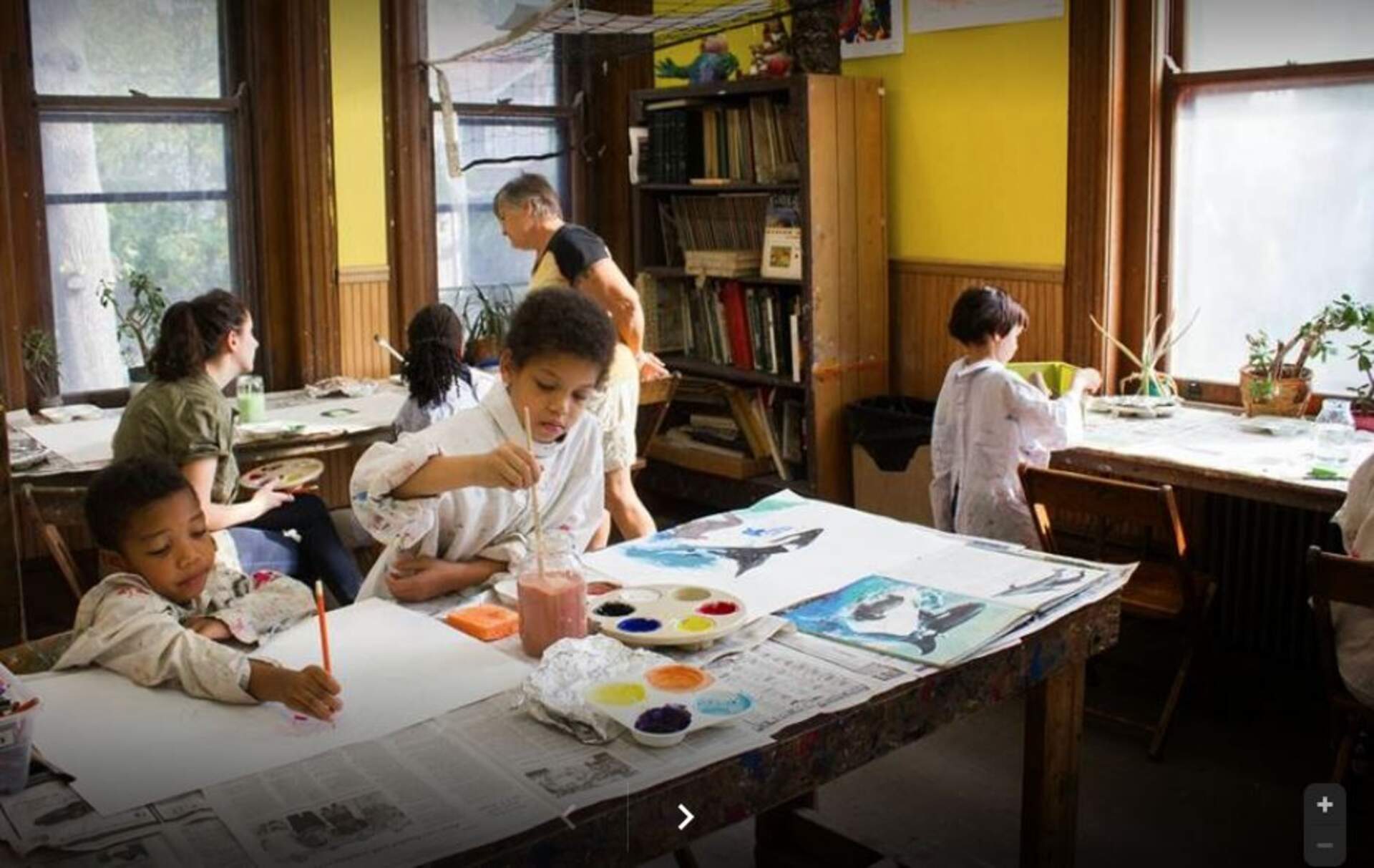Locust Street Art
The roots of Locust St. Neighborhood Arts go back to 1959, when a neighborhood child’s desire to learn how to paint sparked the concept for turning a former convent into a place for arts instruction. Fruit Belt resident Molly Bethel invited neighborhood children to come and make art after school in her home. After a few years, her house could hold no more children and Molly moved the art classes to a St. Philip’s Episcopal Church. There, Molly met art teacher Olga Lownie, and the two partnered to form MollyOlga Neighborhood Art Classes in the early 1960’s.
After urban renewal and the Kensington Expressway claimed St. Philip’s Episcopal Church where art classes took place, St. Boniface Conventt on Locust St. offered MollyOlga the first floor for art classes. When the Order closed a few years later, it was the Fruit Belt community who raised the funds to purchase the building and keep MollyOlga’s free art classes accessible to the community. Through donation jars in neighborhood bakeries, restaurants, salons, barber shops, and bars, the Fruit Belt community raised over $7,000 for MollyOlga to purchase the beautiful three-story Beaux-Arts building which has hosted free art classes for the last 40 plus years.
In the early years of MollyOlga, painting and ceramics were the main art classes offered. From the very beginning, Molly Bethel was especially focused on honing the core principles of color and composition. Students would learn to mix any color from primary colors, and came to understand balance and form through use of soft pastel. Students learned how to present their work as well for the Annual Art Show. Once the convent was purchased, local architect (and Olga’s husband) Ted Lownie and photographer Barbi Brill built a dark room so MollyOlga could offer photography courses as well.
MollyOlga also offered adult courses so that people of all ages could embrace their artistic talents. It was here that artists such as Juan Cavasos would thrive. Juan was a migrant worker who learned to focus his talent through classes at MollyOlga; his works celebrated the power of art, as well as the beauty and plight of life as an itinerant worker. Cavasos would later receive a degree in art from RIT, and go on to help itinerant workers organize to protect their rights.
MollyOlga knew that to consistently provide free art classes, a variety of revenue streams had to be pursued. For many decades, MollyOlga would rent out student works in the Permanent Collection for decoration at a variety of pediatric and doctor’s offices. MollyOlga excelled at executing local Public Art projects as well—which speaks to an incredible level of organization and coordination, considering how many children and various artists were involved. During an expansion of Buffalo General Hospitalin the late 1990’s, MollyOlga was commissioned to create artworks that would cover the chain-link fence surrounding the construction site. MollyOlga organized hundreds of student artists to paint wooden squares that would be affixed to the fence. Similarly, MollyOlga also organized hundreds of students to mold, fire, and glaze ceramic tiles which would decorate the main lobby of the Apollo Theater on Jefferson Avenue.
MollyOlga was more than just Saturday art classes, and strove to support creativity in many different spheres of daily life. At the annual Juneteenth festival, MollyOlga ran a Polaroid photo booth where children could take a family photograph and then decorate a frame for Father’s Day. For many families, this tradition continued for over four decades. When musicians from the Colored Musicians Club needed practice spaces in the 1990’s, MollyOlga offered the building for rehearsals in the evening, thus helping another powerful creative form of art survive and thrive.
The name of MollyOlga changed to Locust Street Neighborhood Art Classes since both Olga Lownie and Molly Bethel have stepped away from leadership positions, but the mission remains the same: to provide free and accessible art classes to people—particularly in disenfranchised communities like the Fruit Belt—who desire to hone their skills in the arts. Locust St. has become a place where people can grow as artists and as more active parts of their communities. Some things have changed at Locust St.—it now offers animation classes as well as drawing, painting, ceramics, and photography. The digital animation lab is down the hall from the dark room, because Locust St. believes that students need access to analog and digital tools in order to develop their artistic skills in the world today.
In the nearly 60 years that MollyOlga has existed, entire generations of families have attended art classes—first as children, then as adults bringing their children to art classes (and often staying for classes themselves). The Fruit Belt community has shown over and over again that they support what Locust St. brings to their world. At a time when the Fruit Belt is trying to establish autonomy in context with the rapid expansion of the Buffalo Niagara Medical Corridor, it is crucial that such foundational community institutions as Locust St. remain strong, thus ensuring the stability of the community’s culture and long-standing impacts. Every community deserves art, and with continued community support, Locust St. strives to continue to provide much-needed access to the arts to people from all communities who desire to learn.
For more information on Locust Street Arts and upcoming classes, visit http://www.locuststreetart.org/.
History compiled by Heather Gring, Burchfield Penney Archivist and Locust Street Art Board Member
